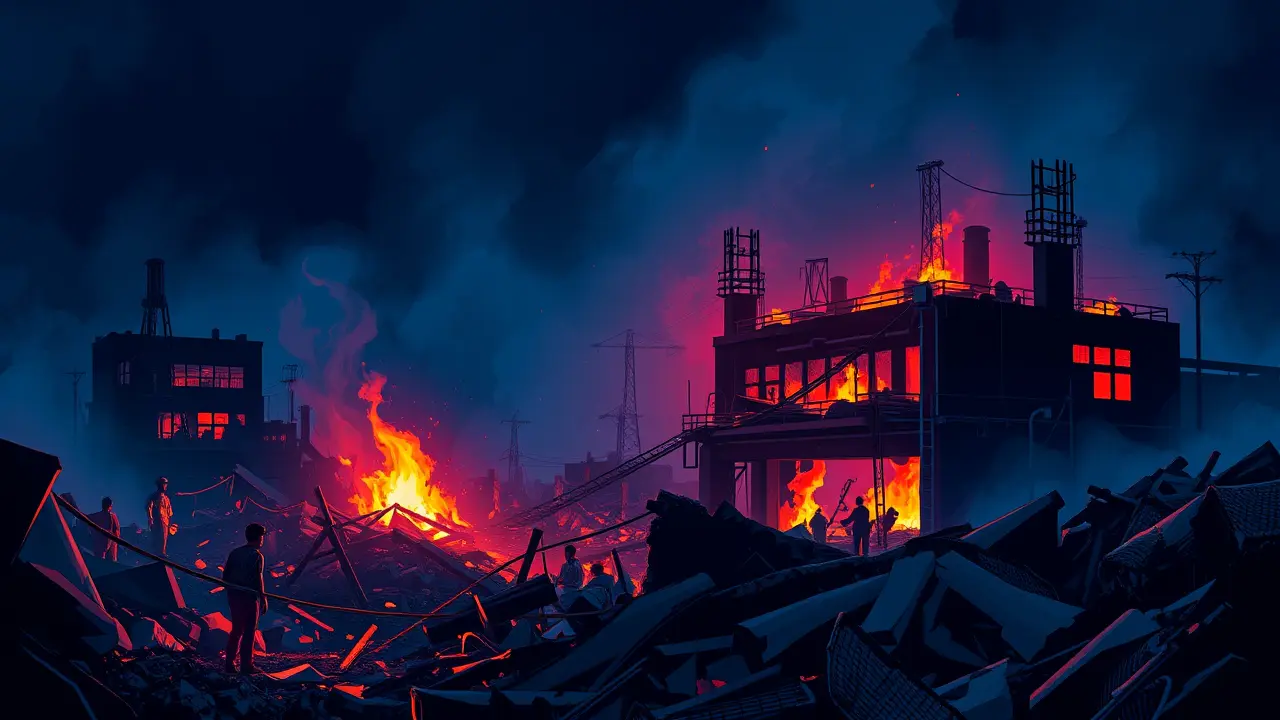Deadly Fire at Bangladesh Garment Factory Kills at Least 16
The charred remains of a garment factory on the outskirts of Dhaka tell a story we have heard too many times before, a grim narrative of negligence and preventable tragedy that has once again claimed at least 16 lives, with officials grimly warning the toll is almost certain to rise as recovery teams sift through the ashes where victims were burned beyond recognition. This is not merely a fire; it is a systemic failure, a brutal reminder of the human cost stitched into the very fabric of our global fast-fashion supply chain, a crisis that feels both urgent and hauntingly familiar.I read the Reuters alert this morning with a familiar sinking feeling, the same one that surfaced a decade ago with the Rana Plaza collapse, a catastrophe that killed over 1,100 and promised to be a watershed moment for reform. Yet here we are, confronting the same horrifying imagery, the same promises of investigations, the same hollow echoes from an industry that has repeatedly failed its most vulnerable workers.The specifics of this blaze will emerge—faulty wiring, locked exits, inadequate fire suppression systems—the usual suspects in a playbook of industrial manslaughter. But to focus solely on the spark is to miss the inferno of complicity; this is about the relentless pressure for cheaper production, faster turnaround, and higher margins that creates an environment where safety is the first compromise.I think of the young women and men who walked into that factory, likely earning less than a living wage, powering an industry that generates billions for Western retailers, yet who were denied the most fundamental right: to leave work alive. The emotional toll is incalculable, rippling through families and communities that depend on this precarious work, a cycle of poverty and risk that seems unbreakable.Broader context is essential here; Bangladesh’s garment sector, the second largest in the world, has made documented strides since the Accord on Fire and Building Safety was established post-Rana Plaza, but this fire signals a dangerous backsliding or, perhaps, reveals the limitations of such initiatives in the face of pervasive corruption and a race to the bottom. Expert commentary from labor rights organizations like the Clean Clothes Campaign will undoubtedly point to the gaps in enforcement, the subcontracting to smaller, unregulated factories where oversight evaporates.The possible consequences are twofold: immediate, in the form of halted orders from conscientious brands and government-led inquiries that rarely deliver meaningful justice, and long-term, a further erosion of trust and a deepening of the cynicism that surrounds ethical sourcing. Analytically, this event must be framed as a direct consequence of a global economic model that externalizes risk onto the poorest.The historical precedent is clear—from the Triangle Shirtwaist Factory fire in New York City in 1911 to the countless factory fires in South Asia since—we know the pattern, we know the solutions, and we are failing to implement them with the necessary force. The narrative isn't just about the smoke and the flames; it's about the international buyers who must be held accountable for their entire supply chain, the local government that must prioritize human life over export revenue, and the consumers whose demand for endless newness fuels this dangerous engine. As the sun sets on another day of mourning in Bangladesh, the real insight is that without radical transparency and binding accountability, this will not be the last dispatch I write with this particular, heartbreaking urgency.
Latest News
The charts are whispering what the true believers have felt in their bones for weeks—Dogecoin is carving out a bottom.
17 hours ago5 comments
The Institute for Fiscal Studies has thrown a stark warning onto Rachel Reeves's desk, urging the Chancellor to confront a potential £22 billion shortfall in
17 hours ago3 comments
Alright, let's break down this absolute heater of a performance from the Chicago Blackhawks, because if you missed this one, you missed a party.
18 hours ago5 comments
The ice was hot last night in the NHL, folks, serving up a slate of games that felt less like a regular season Tuesday and more like a playoff preview with a
18 hours ago3 comments
The XRP chart is painting a tantalizing picture for those with the stomach to withstand the relentless pressure from crypto's leviathans.
18 hours ago4 comments
It’s in the small shifts, the quiet recalibrations of a Thursday morning, where the most meaningful change often takes root.
18 hours ago4 comments
In a move that sent ripples of quiet confidence through the crypto ecosystem, blockchain intelligence firms tracked a monumental treasury allocation from
18 hours ago4 comments
In a move that would have drawn a nod of approval from historical figures like Churchill, who understood the delicate balance of power within democratic
18 hours ago2 comments
MA
Maya Sharma123k1 day ago
this is so heartbreaking and frustrating to read, feels like we're just going in circles smh would love to connect with others who are working on supply chain transparency tho
0
JA
Jamie Larson123k2 days ago
this is just so heartbreaking and infuriating at the same time feels like we learned nothing from the past
0
